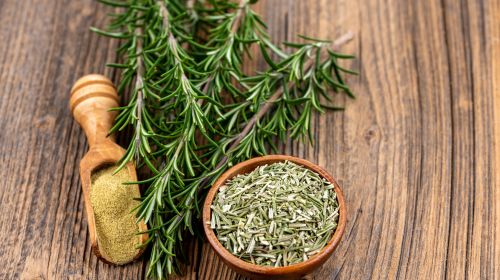In shoulder impingement syndrome, muscles, tendons, bursa or nerves are pinched under the acromion, which causes severe pain and restricted movement. Find out which exercises can help and when surgery is necessary!
- © Getty Images/Terry Vine
Quick overview: Frequently asked questions & answers
How do you treat impingement syndrome? Initial treatment is conservative with painkillers and physiotherapy. If this is unsuccessful, surgery may be necessary.
How long does it take to heal from impingement syndrome? The healing time varies from person to person. Depending on the sporting or professional strain, the shoulder should initially be protected for around four to twelve weeks.
At a glance:
What is shoulder impingement syndrome?
The term impingement means something like entrapment. In shoulder impingement syndrome, there is a constriction under the shoulder roof (acromion), which is why experts also refer to it as subacromial impingement syndrome. This leads to painful compression of tendons or soft tissues, which limits mobility.
Shoulder impingement syndrome is the second most common cause of shoulder pain after rotator cuff tears. It usually occurs between the ages of 50 and 60.
Experts distinguish between different forms of shoulder impingement syndrome:
In primarily extrinsic impingement (also called outlet impingement) of the shoulder presses bone onto the tendons and this results in a real narrowing of the tendon path. The cause can be congenital or acquired curvature of the acromion, a congenital bone spur on the anterior acromion or signs of wear and tear.
The secondary extrinsic impingement (also called non-outlet impingement) of the shoulder occurs as a result of muscular imbalances that cause the head of the humerus to lose its centering in the joint socket. Tendons, muscle parts and bursa become painfully pinched. Inflammation and tendon damage can further reduce the joint space and worsen pain and restricted movement.
In intrinsic shoulder impingement The causes can be found within the tendon itself. These include degenerative changes, acute injuries, overloading of the rotator cuff, inflammatory tendon diseases or tendon changes caused by diseases such as diabetes mellitus or renal insufficiency (kidney failure). This leads to pinching within the rotator cuff or between the humerus and the joint socket.
The internal impingement of the shoulder is a special form and is also called “athlete’s shoulder”. It occurs due to extreme and/or one-sided strain on the shoulders, for example during overhead or throwing sports, but also when working overhead, such as that carried out by painters or car mechanics.
-

©bilderzwerg – stock.adobe.com
In addition to the shoulder, impingement syndrome can also occur in other joints, such as the hip joint (hip impingement) or the ankle joint.
Symptoms of shoulder impingement syndrome
Pain when lifting the upper arm to the side is typical of impingement syndrome. Experts refer to this as a so-called “painful arc”. The pain is particularly pronounced when the arm is raised at an angle between 60 and 120 degrees and disappears again when it points vertically upwards.
Initially, the symptoms mainly occur during exertion. Over time, however, pain often occurs at rest and lying on the affected side becomes impossible.
The mobility of the joint gradually decreases until what is known as frozen shoulder occurs. This means that even everyday tasks such as combing your hair or putting on a jacket can become a problem.
Hip impingement: what symptoms are possible?
The symptoms of hip impingement syndrome are often experienced as groin pain that feels dull and stabbing and can radiate into the thigh.
Typically, pain occurs after sitting for a long time, for example through office work. Other triggers are severe dislocations of the hip joint, such as those that occur during contact sports or yoga. As the disease progresses, pain may also occur when walking or at rest.
How is impingement syndrome treated?
In the first step, doctors try to relieve the pain in the shoulder and restore mobility to the joint (conservative therapy). Anti-inflammatory painkillers such as ibuprofen or diclofenac are prescribed.
If the pain is severe, anesthetics and cortisone can also be injected under the acromion. If there is a so-called limestone shoulder, the limescale deposits can be broken down using shock waves.
The affected shoulder should be spared, but not completely immobilized. With the help of physiotherapy and exercises at home, she can gradually become more mobile and strengthened again.
When surgery should be performed
If building muscle doesn’t help and the symptoms don’t go away after six to twelve months, you can consider surgery.
In most cases, such an operation is carried out minimally invasively (as part of an arthroscopy). Depending on the cause of the symptoms, calcium deposits are removed, the bony constriction is eliminated or tendon injuries are treated.
Shoulder impingement syndrome: exercises
Ideally, an individual exercise program is put together in the physiotherapy practice, which should also be carried out consistently at home. The following exercises, among others, are particularly suitable for stretching and strengthening the shoulder area:
Stand in the middle of a doorway. The elbows are close to the body, the hands are supported on the right and left of the frame. With your back straight, tilt your chest slightly forward and hold this position for 30 seconds to two minutes. Repeat this exercise 15 times.
Stand upright with your feet about shoulder-width apart. Your elbows are close to your body, your palms are facing the ceiling, and you are holding a Theraband in your hands. Now bring tension to the band by turning your arms outwards and pulling your shoulder blades together. Hold this position for three seconds and repeat the exercise 15 times.
Support yourself with your hands against the edge of a table and do ten push-ups against the table three times. Be sure to keep your shoulders down.
Stand with your back to the table and your feet about three foot lengths away from the table. Support yourself on the table behind your back with your hands approximately shoulder-width apart. Now lower your buttocks as if you wanted to sit down – your elbows move back to a 90 degree position. Make sure that your shoulder blades are always pulled back and downwards. Do ten repetitions three times.
Impingement syndrome: causes and risk factors
The shoulder joint is one of the most mobile, but also one of the most unstable joints in the human body. Unlike in almost all other joints, it is not the bones but rather the ligaments and muscles that are responsible for the support – this makes the joint very susceptible to injuries.
There are numerous possible reasons for the typical symptoms of shoulder impingement:
- congenital unfavorable shape of the acromion
- Injuries in the shoulder joint area
- weak or one-sided muscles
- Joint wear (arthrosis)
- Bursitis or tendonitis
- Tendon tears
- Deposition of calcium deposits in a tendon (calcareous shoulder)
- Nerve damage that affects normal muscle function
This is how shoulder impingement syndrome is diagnosed
The diagnosis of impingement syndrome begins with a detailed discussion in the doctor’s office (anamnesis), during which the specific symptoms, any previous illnesses and any medications taken are queried.
The job and the sports you practice can also provide clues to triggers such as overhead work. Various shoulder function tests are then carried out, which can be used to confirm the suspicion in 90 percent of cases.
In some cases, additional imaging procedures such as ultrasound, X-rays, CT or MRI are used: This makes bone changes, calcium deposits, inflammation and injuries visible.
Course and prognosis of shoulder impingement
An exact prognosis for the course of shoulder impingement syndrome cannot be made; the courses vary greatly. However, the earlier treatment begins, the better the chances of recovery.
If left untreated, shoulder impingement can lead to signs of wear and tear, inflammatory reactions or increasing joint stiffness.
Conservative therapy requires a lot of patience and perseverance: it usually takes many months until the symptoms noticeably subside. In around 30 percent of cases, surgery has to be carried out because conservative therapy is unsuccessful.
How can impingement syndrome be prevented?
The best way to prevent shoulder impingement syndrome is to avoid poor posture and one-sided movements.
If you work a lot overhead or sitting or do intensive overhead sports, you should definitely ensure that your shoulder area is sufficiently stretched and strengthened. If shoulder pain still occurs, treatment should be initiated as early as possible.


